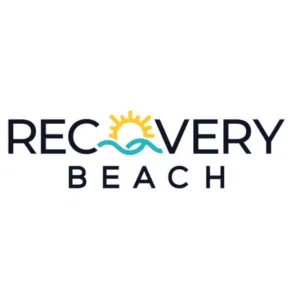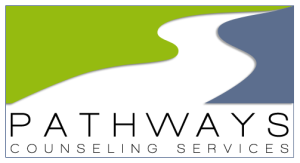Condoms are among the effective ways of preventing HIV transmission during sex. Unfortunately, most people don’t use them or use them inconsistently. However, condoms may break during sex, putting you at risk of contracting the virus. Here we look at when you should get tested after condomless sex.
If you think you might have been exposed to HIV during sex either due to breakage or lack of condom use, ensure to visit a healthcare provider as soon as possible.
If you seek medical intervention within 72 hours of unprotected sex, you might be eligible to commence a medication plan to reduce your risk of contracting HIV. You can also set a date, later on, to be tested for HIV and other sexually transmitted diseases.
This article discusses preventive medication, how soon you should be tested for HIV after condomless sex, different types of HIV tests, and the risk factors of various forms of condomless sex.
After How Long Should You Get Tested For HIV After Condomless Sex?
First and importantly, if you think you’ve been exposed to the virus, you should see a healthcare provider as soon as possible.
There isn’t an HIV test that can detect the virus immediately after exposure. However, ‘window period’ refers to the time frame before you get tested and get accurate results.
It’s important to get tested for HIV after the window period lapses after exposure to the virus to get an accurate diagnosis.
Persons at higher risk of contracting HIV should get tested for this virus at least once every three months.
How Soon HIV is Detected Using a Blood Test?
The window period refers to the time from when a person is exposed to HIV to when the virus is detected. This period can last from 10 -30 days, depending on one’s immunity and the type of test they’re taking.
During the window period, an individual test may come out negative even if they’re positive. A person can still infect other people during the window period. In fact, transmission is more likely to occur during the window period due to higher virus levels.
The following is a quick breakdown of different types of HIV tests and the window period of each:
Nucleic Acid Tests
A nucleic acid test (NAT) measures the amount of the virus in a blood sample and gives either positive or negative results.
NATs are a bit expensive compared to other forms of testing, and a doctor only orders one if they think that there’s a high chance that an individual was exposed to HIV or when the screening test results are indeterminate.
Rapid Antibody Tests
Rapid antibody tests measure antibodies to HIV. It takes about three months for your body to produce these antibodies.
Most individuals will have enough antibodies to test positive within 3-12 weeks after exposure to HIV. At three months or 12 weeks, 97% of individuals have enough antibodies for a certain test result.
However, if an individual takes a rapid antibody test 4 weeks after exposure, a negative or positive result might be accurate. Nevertheless, it’s advisable to test again after three months to be certain.
Combination Tests
Also known as a rapid antibody test, antigen test, or fourth-generation tests, a healthcare provider can order this test which must be conducted at a lab.
Combination tests measure both antibodies and levels of the p24 antigen, which is likely to be detected two weeks after exposure to HIV. Generally, most people produce antibodies and antigens enough for combination tests to detect HIV 14 to 42 days after exposure.
Home Testing Kits
Home testing kits are antibody tests that can be done at home using a sample of oral fluid. The window period of home testing kits is three months.
Preventive Medication for HIV
The sooner a person sees a healthcare provider after exposure to HIV can affect their chances of contracting the virus.
If you think you might have been exposed to the virus or are at higher risk of contracting HIV, ensure to visit a healthcare provider within 72 hours. The healthcare provider might offer you an antiretroviral treatment known as post-exposure prophylaxis (PEP), which reduces your risk of contracting HIV. PEP is taken once or twice daily for 28 days.
According to the Centers for Disease Control and Prevention (CDC), PrEP might have less or no effect if taken 72 hours after exposure to HIV. In fact, this medication might not be offered unless it’s within 72 hours of exposure.
Types of Condomless Sex and Risk of HIV
In event of condomless sex, bodily fluids from an HIV-positive can transmit the virus to their partner through mucous membranes of the vagina, penis, or anus. However, though rarely, HIV can be transmitted through an open cut or sore in the mouth during oral sex.
Of all condomless sex, HIV can easily be spread during anal sex. This is because the lining of the anus is fragile and prone to damage, creating easy entry points for HIV.
Bottoming or receptive anal sex poses more risks for contracting the virus than topping or insertive anal sex.
HIV can also be transmitted during condomless vaginal sex, even if the vagina’s lining isn’t more susceptible to tears compared to the anus.
The risks of getting HIV during condomless oral sex are very low. However, if the transmission of HIV can occur if the person giving oral sex has open mouth sores or bleeding gum or if the person receiving oral sex has recently contracted HIV.
Additionally, vaginal, anal, or oral sex without a condom can lead to sexually transmitted infections (STIs).
Condomless Sex and HIV Testing – Conclusion
Using a condom during sex can protect you against contracting HIV. However, as earlier stated, a condom can burst during sex. If you think that you might have been exposed to HIV for any reason, you should visit a doctor before 72 hours. During this time, the doctor will provide you with preventive medication and advise you on when to get tested for the virus. However, if you want to stay clear of HIV, ensure to engage in protected sex, limit the number of sex partners, and ensure you and your partner get tested for HIV after every three months.
If you own an HIV testing Clinic please list your business, HERE















